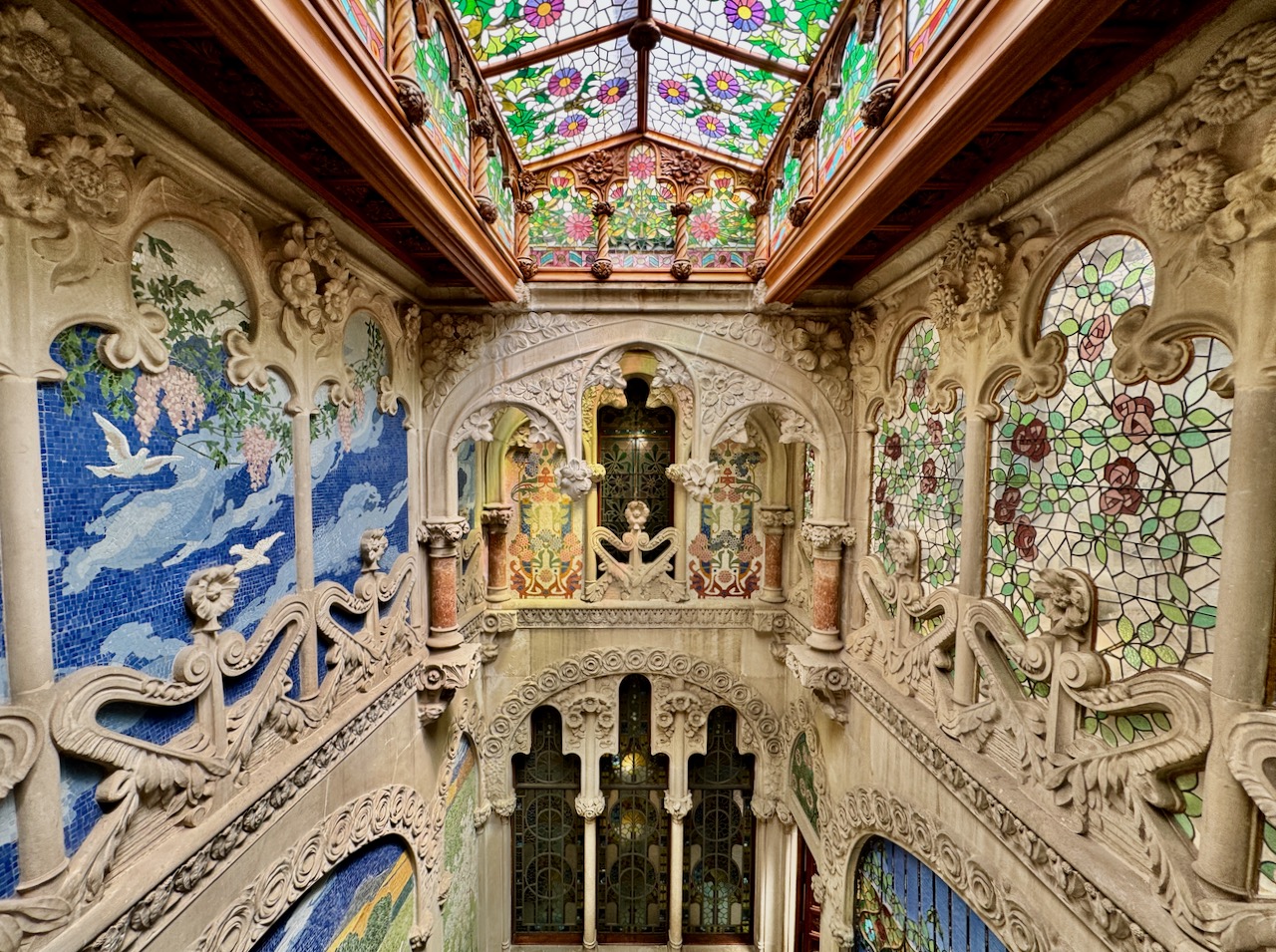
Reus is a city in the heart of Catalonia’s Tarragona province that combines rich history, cultural dynamism and architectural splendour. When I learned that Reus is the birthplace of the great architect Antoni Gaudí, and that it’s home to more than 80 Modernist buildings, I made a mental note to visit it one day as I’m a huge fan of Gaudí and the Catalan Modernism architectural style. Reus flourished particularly in the late 19th and early 20th centuries and became one of the cradles of Catalan Modernism. Today, Reus offers visitors a vivid Modernist architecture walk through this extraordinary period. With its impressive collection of historical landmarks, lively cultural spaces and Mediterranean charm, there’s a lot of things to see and do in Reus.
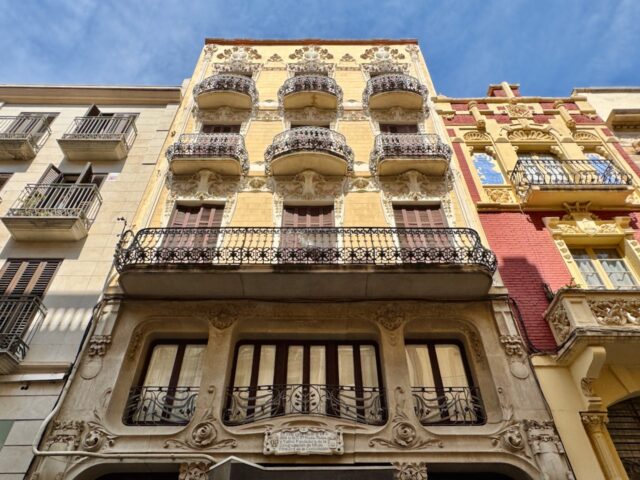 Beautiful Modernist architecture in Reus
Beautiful Modernist architecture in Reus

Considering the fact that I visit Catalonia almost every year, the opportunity to explore Reus soon came up, and I’m so glad I did it! Catalan Modernism can be seen most notably in Barcelona (such as the amazing Sagrada Familia), but also in Sitges and Palma de Mallorca, but I quickly discovered that Reus offers one of the most concentrated collections of Catalan Modernism outside Barcelona. Splendid examples can be found throughout the city, and for architecture fans, it’s a treat to spot them on an architecture walk in Reus. Furthermore, I loved the city’s relaxed vibes, elegant streets and its countless cafés and restaurants.
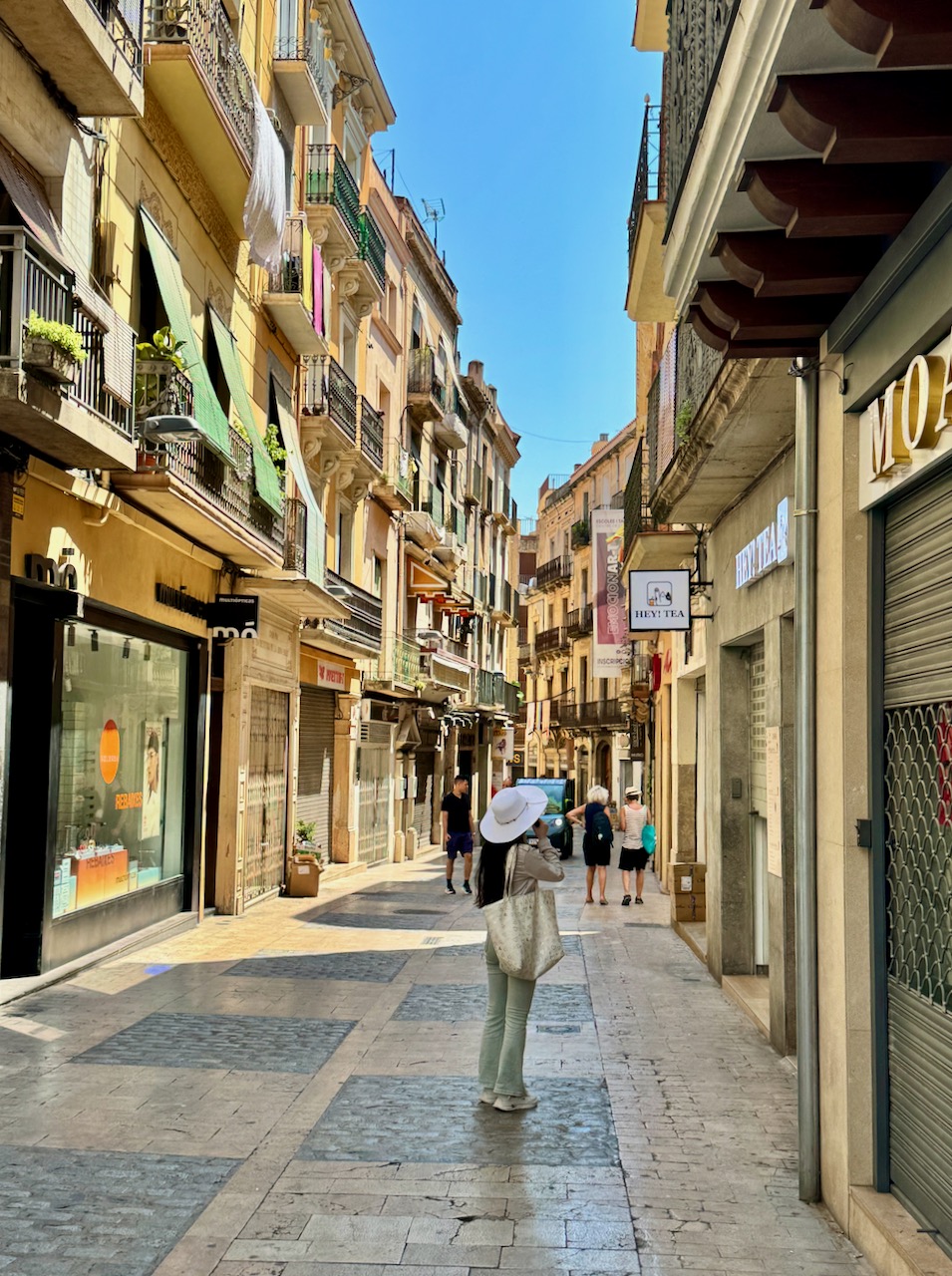 A street in Reus
A street in Reus
A (very) brief history of Reus
The origins of Reus date back to the Middle Ages, when it grew around a small castle and agricultural community. By the 12th century, the town had begun to expand, benefiting from its strategic location near the Mediterranean coast and trade routes linking inland Catalonia. During the 18th and 19th centuries, Reus became one of Catalonia’s most prosperous cities, largely due to the flourishing distilled spirits and textile industries. It vied with London and Paris as a centre of the liquor trade. Wealthy merchants and industrialists transformed the town into a hub of commerce and culture, and this affluence later found expression in a new architectural language: Modernism.
By the early 20th century, Reus was second only to Barcelona in importance within Catalonia. It became a key centre of avant-garde ideas, hosting artists, writers, and architects who gave the city its distinctive identity. The streets of Reus still echo with this legacy, especially in its elegant boulevards and Modernist buildings. The city is also still known as the centre of vermouth (vermut).
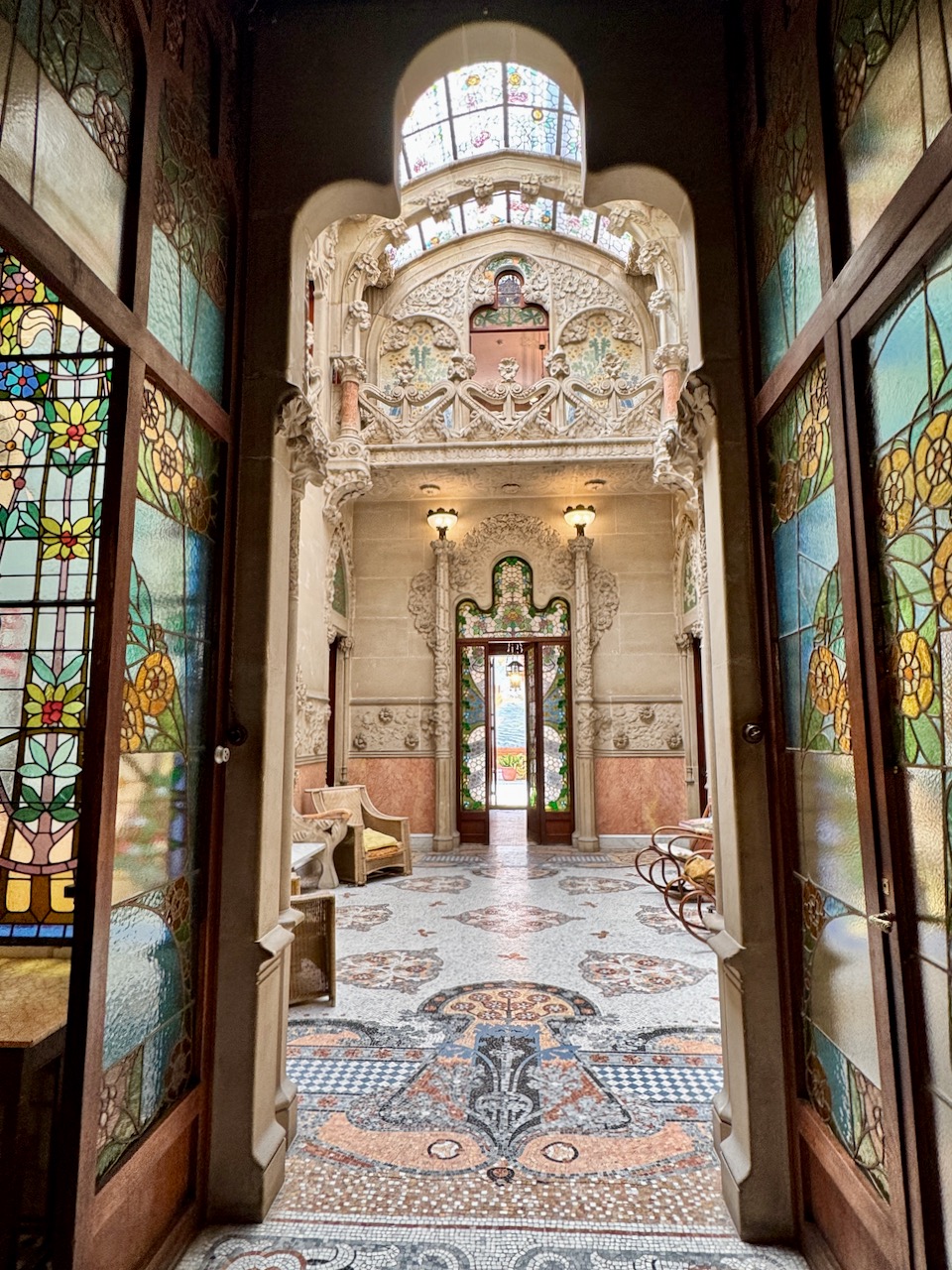 Casa Navas is one of the top sights in Reus
Casa Navas is one of the top sights in Reus
The birthplace of Antoni Gaudí
No discussion of Reus is complete without mentioning its most famous son, Antoni Gaudí i Cornet (1852–1926). Gaudí, the visionary architect behind Barcelona’s Sagrada Família, Park Güell, and Casa Batlló, was born in Reus and spent his formative years there. Although most of his celebrated works are in Barcelona, his childhood in Reus played a vital role in shaping his deep appreciation of nature, geometry and Catalan traditions.
Today, visitors can explore the Gaudí Centre Reus, an interactive museum dedicated to his life and work. Located in the city’s main square, Plaça del Mercadal, the Gaudí Centre provides a fascinating introduction to Gaudí’s architectural philosophy, with multimedia displays and models that bring his work to life.
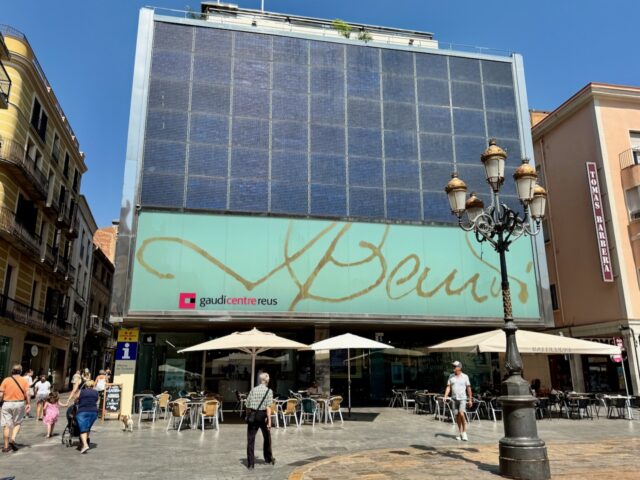 Gaudi Centre at Plaça del Mercadal
Gaudi Centre at Plaça del Mercadal
Catalan Modernism: Origins and Characteristics
Before delving into Reus’s Modernist masterpieces, it’s essential to understand the roots of Catalan Modernism. Emerging in the late 19th century, this artistic and architectural movement coincided with the Renaixença, a cultural revival that sought to reaffirm Catalonia’s distinct identity. Inspired by European Art Nouveau yet deeply rooted in Catalan traditions, Catalan Modernism blended craftsmanship, symbolism and new structural innovations.
Key characteristics of Catalan Modernist architecture include:
-
Organic forms inspired by nature – floral motifs, curved lines and asymmetry.
-
Decorative richness – stained glass, mosaics, wrought iron, and ceramics.
-
Integration of arts – architecture was seen as a total work of art combining sculpture, painting and design.
-
National pride – use of Catalan symbols, folklore and medieval references.
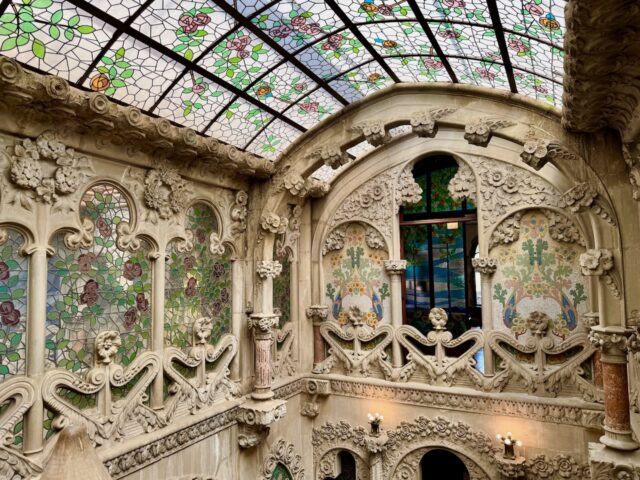 Casa Navas is a prime example of Catalan Modernism.
Casa Navas is a prime example of Catalan Modernism.
While Gaudí remains the movement’s most internationally recognised figure, many other architects, including Lluís Domènech i Montaner and Josep Puig i Cadafalch, contributed to the flourishing of Modernism across Catalonia. Reus, with its wealthy bourgeoisie eager to commission innovative buildings, became a veritable open-air museum of the style.
Walking through Reus today is like stepping back into the Belle Époque. The city boasts over 80 Modernist buildings, many designed by prominent Catalan architects. To showcase this heritage, Reus established the Ruta del Modernisme (Modernist Route), a self-guided walking tour marked by bronze plaques on the pavement. Visitors can obtain a map of this walking route at the tourist office/Gaudí Centre at Plaça del Mercadal.
For my visit, I created my own walking tour of Reus, which incorporates some of the most important Modernist buildings as well as other places of interest. As Reus is an easy day trip from Barcelona (1.5 hours by train from Barcelona-Sants), I created a Reus sightseeing walking route that starts and ends at the train station. Tip: if you’re visiting Reus, don’t miss nearby Tarragona, with its ancient Roman monuments and medieval town centre. Read more about things to see in Tarragona.
Things to see in Reus – a walking tour
This self-guided walking tour can easily be done in a day and covers many of the top things to see in Reus. I’ve included many of the Modernist highlights, as well as beautiful squares, historic buildings, recommended lunch spots and places to try vermouth.
Mercat Central de Reus
From the station, head southeast to the Mercat Central (Central Market). I love browsing around markets and the Mercat Central de Reus is absolutely worth a visit. Built in 1915 in the Rationalist style, it’s a vibrant market with stalls selling fresh produce, meats and seafood.
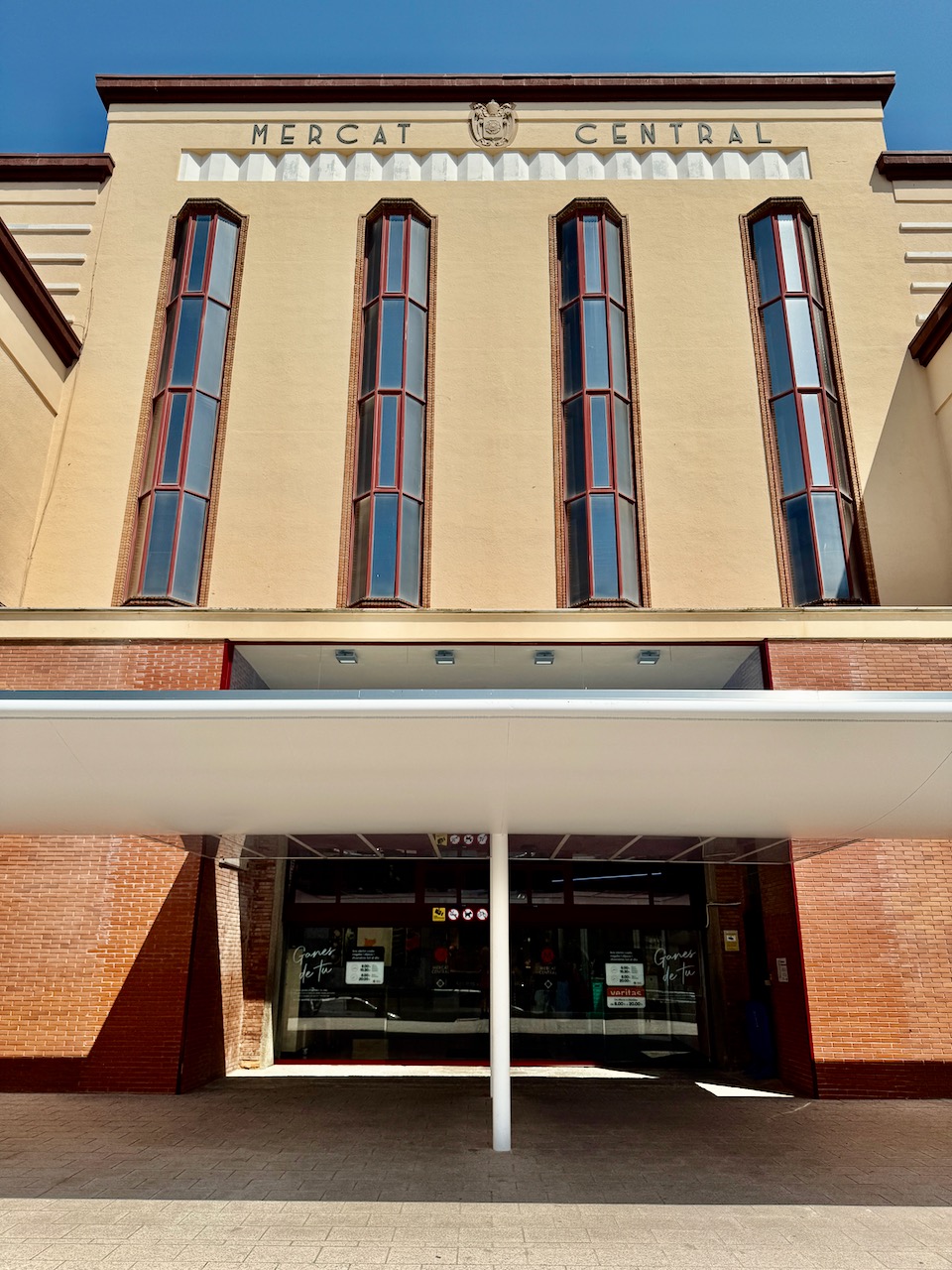 Mercat Central Reus
Mercat Central Reus
Casa Gasull and Casa Rull
Just across the road from the Mercat Central are two Modernist buildings that’ll certainly grab your attention: Casa Gasull and Casa Rull. Built in 1911 by Lluís Domènech i Montaner, Casa Gasull showcases the architect’s mature style. It combines modern materials with exquisite ornamentation, reflecting the client’s social prestige. The house’s façade, with its refined stonework and artistic flourishes, demonstrates the fusion of utility and beauty that defines Modernism.
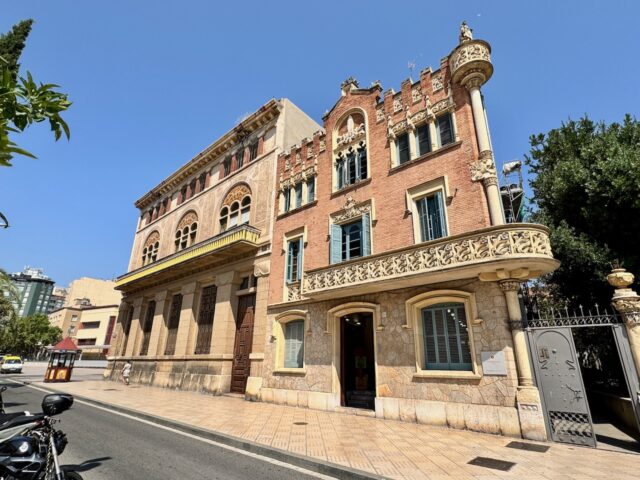 Casa Gasull and Casa Rull
Casa Gasull and Casa Rull
Another masterpiece by Domènech i Montaner, Casa Rull (1900) exemplifies the elegance of Modernist domestic architecture. Commissioned by a wealthy notary, it features floral decorations, and a beautifully ornamented façade. Today, Casa Rull houses the city’s cultural department and occasionally hosts exhibitions.
Continue along Carrer de Sant Joan towards Plaça de Prim and you’ll soon see two more Modernist beauties: Casa Grau Pla and Casa Marc.
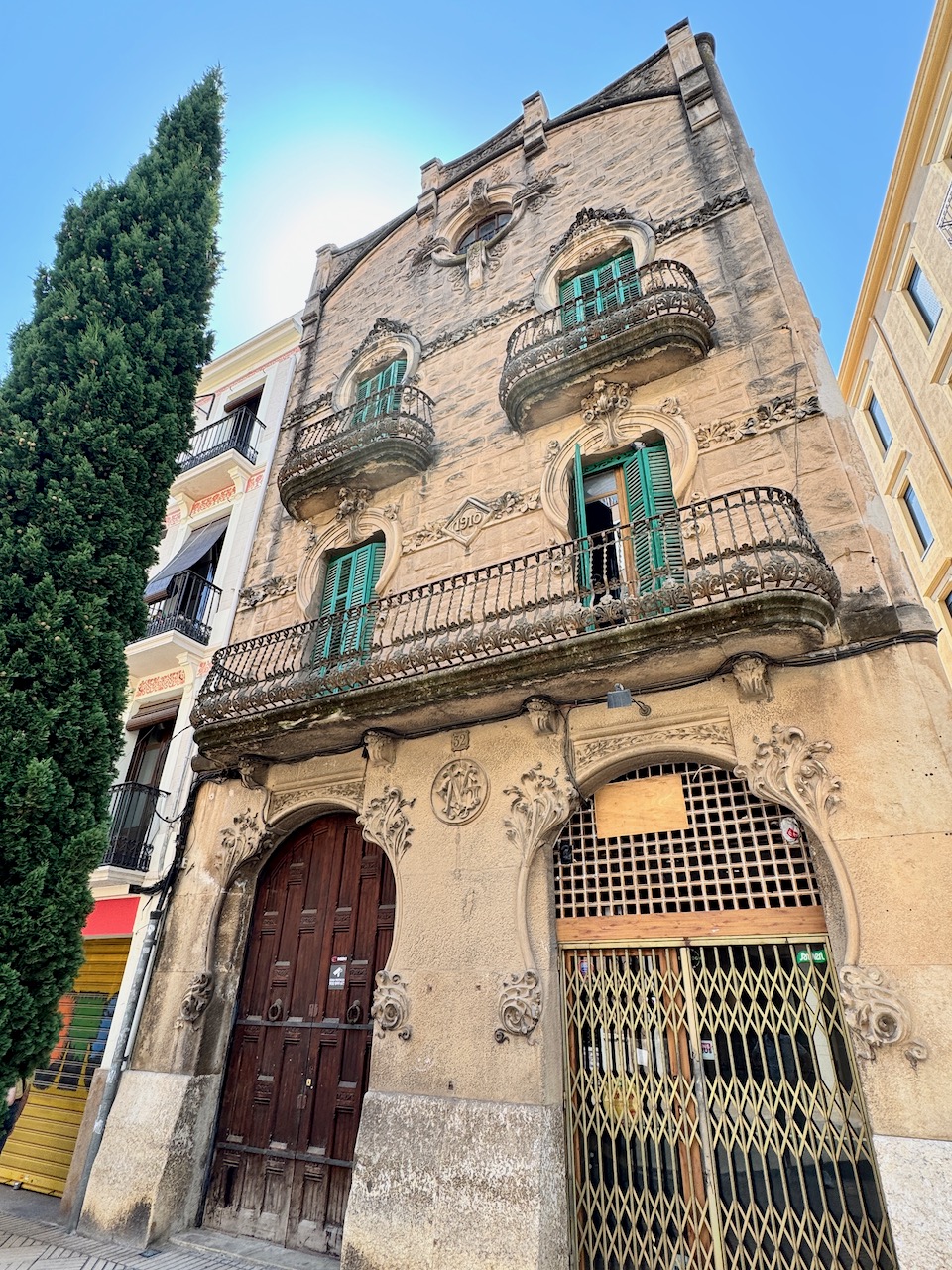 Casa Grau Pla
Casa Grau Pla
Plaça de Prim
This handsome square is lined by elegant buildings and arcades. In one corner of the square stands the beautiful Theatre Fortuny (though you’ll only be able to see its grand interior if you buy a ticket for a performance). Fortuny, born in Reus, was a well-known artist in the 19th century.
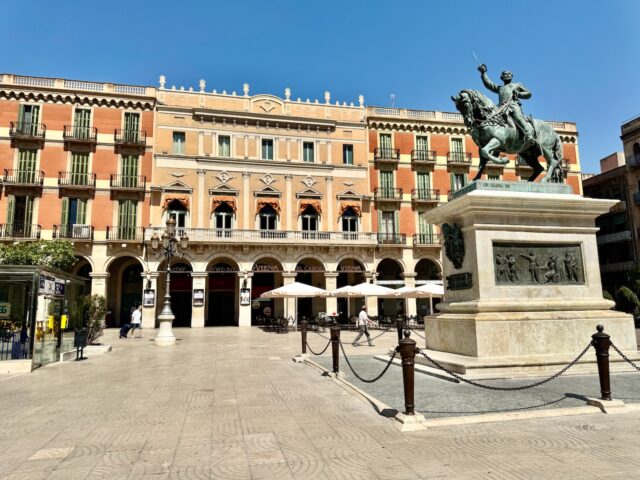 Plaça de Prim
Plaça de Prim
The statue in the centre of the square is of General Joan Prim i Prats, a citizen of Reus and a former Prime Minister of Spain.
Plaça del Mercadal
From Plaça de Prim, walk down Carrer de Monterols, a shopping street, to the city’s main square: Plaça del Mercadal. You could spend several hours here as there are numerous attractions worth visiting such as the Gaudí Centre and Casa Navàs, as well as the City Hall and numerous restaurants and cafés. Don’t miss another Modernist highlight, Casa Pinyol, opposite the City Hall.
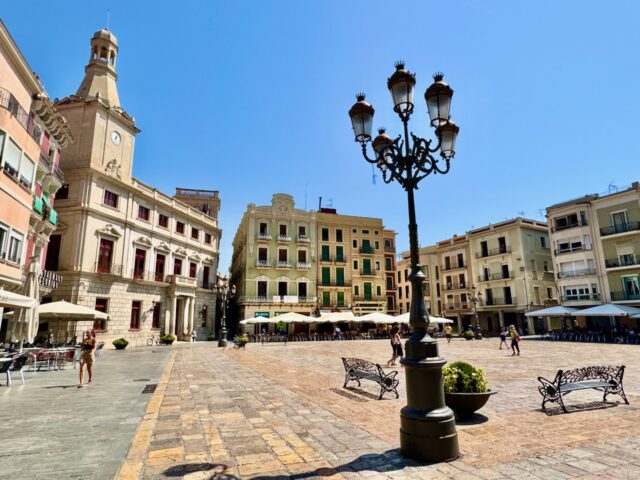 Plaça del Mercadal
Plaça del Mercadal
Casa Navàs
Designed by Lluís Domènech i Montaner in 1901, Casa Navàs is the jewel of Reus’s Modernist architecture. Located in Plaça del Mercadal, this building was commissioned by textile magnate Joaquim Navàs. It features lavish stained-glass windows, mosaics, and carved stone façades, though parts were damaged during the Spanish Civil War. Even so, Casa Navàs remains one of the most impressive Modernist residences in Europe. I also found it fascinating to see technology considered state-of-the-art in the early 20th century, such as the bathroom shower.
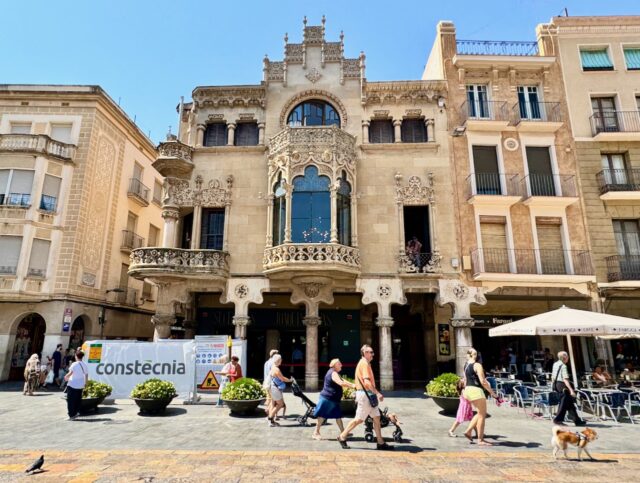 Casa Navas exterior
Casa Navas exterior 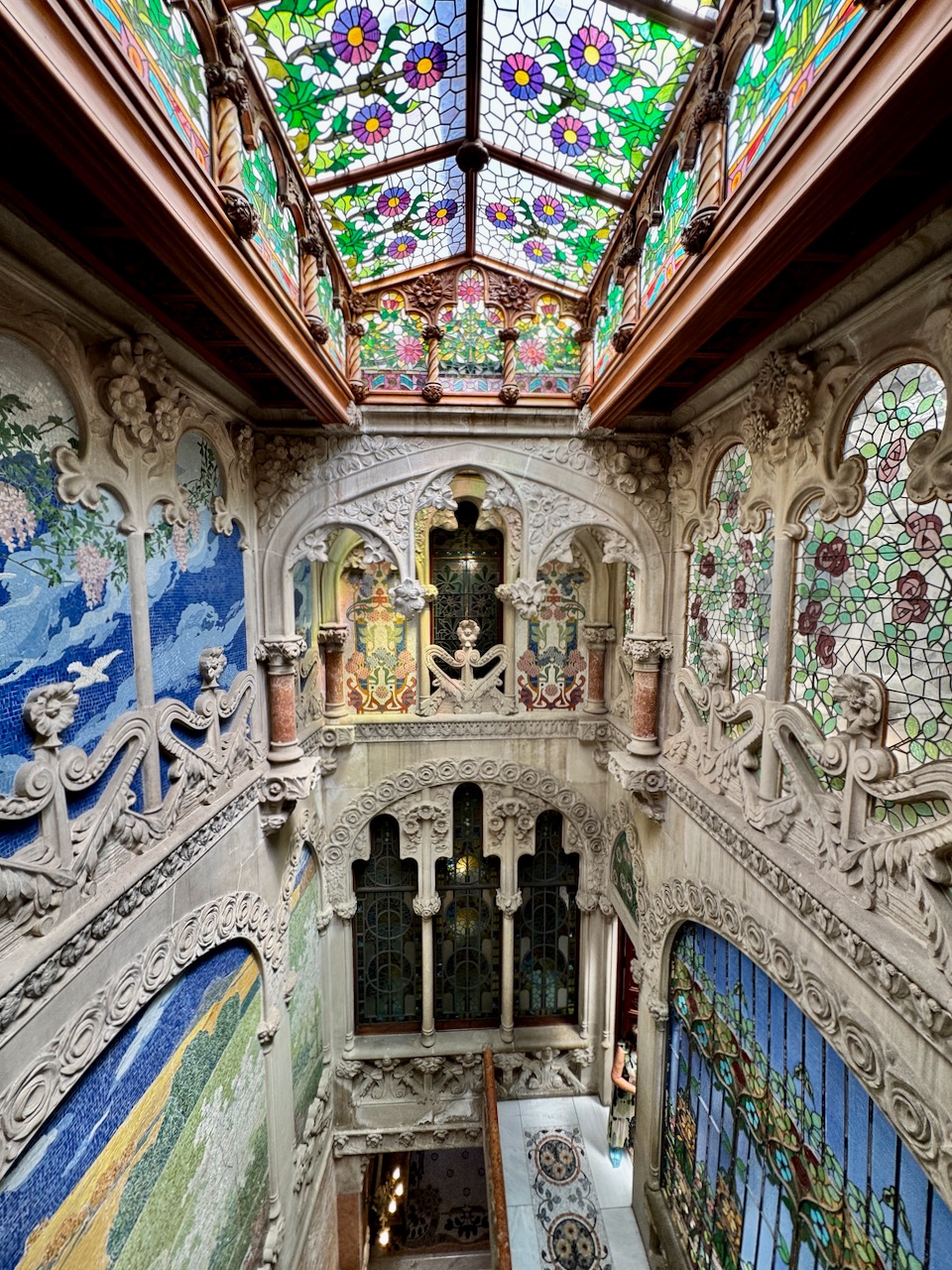 The opulent interior of Casa Navas
The opulent interior of Casa Navas
I recommend booking a tour in advance as this is one house you won’t want to miss! Note that photos are only allowed in 3 specific areas inside the building.
Historic centre of Reus
The historic centre of Reus, with Plaça del Mercadal at its heart, is a patchwork of streets and little squares. The atmospheric streets and alleys are packed with cafés, restaurants and shops. Feel free to stray off my walking route to explore this district.
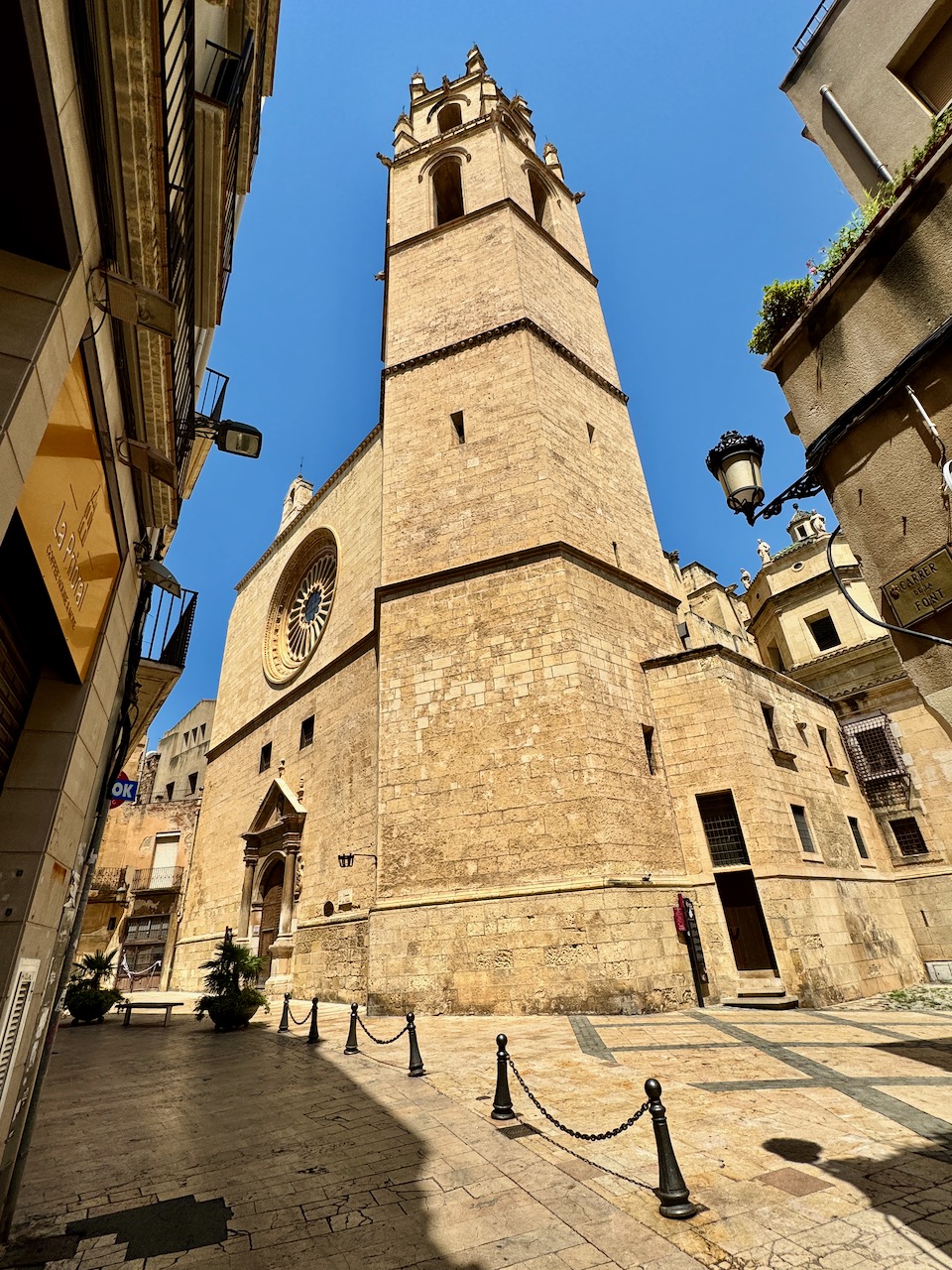 Sant Pere de Reus
Sant Pere de Reus
Places to look out for include the Church of Sant Pere Apòstol (16th century Gothic style church where Gaudí was baptised. Its bell tower offers panoramic views of the city), Plaça de les Peixateries Velles (an elegant square with a beautiful view of the church) and the colourful Casa Anguera.
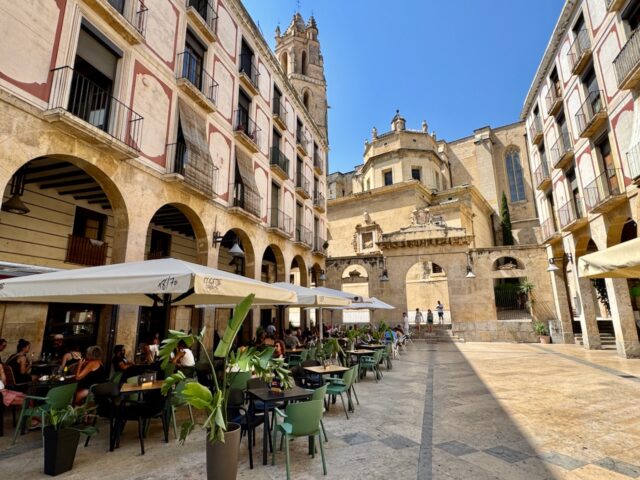 Plaça de les Peixateries Velles
Plaça de les Peixateries Velles
For lunch, I recommend La Kchoperia at Plaça de les Peixateries Velles – delicious local cuisine at reasonable prices. Or head to Bar El Castell (Plaça del Castell) for tapas and drinks. For a unique experience, head to Restaurant del Museu del Vermut (Carrer de Vallroquetes, 7), a restaurant/vermouth museum where you can enjoy tapas as well as taste vermouth (they have a huge collection of wines and vermouth).
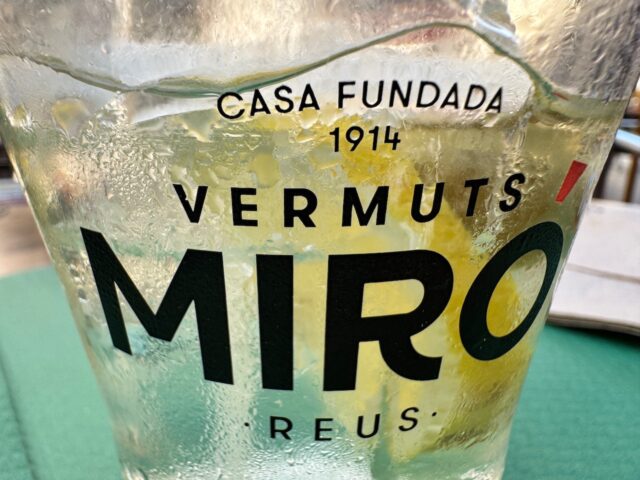 You can’t leave Reus without trying some of the local vermouth!
You can’t leave Reus without trying some of the local vermouth!
Casa Bartoli and Casa Tomàs Jordi
On your way back to the station, walk through Carrer de Llovera, a street that starts at Plaça de Prim. There are numerous gorgeous Modernist buildings in this street but look out for Casa Bartoli and Casa Tomàs Jordi. These lesser-known but equally beautiful buildings reflect the enthusiasm of the city’s bourgeois patrons for avant-garde architecture.
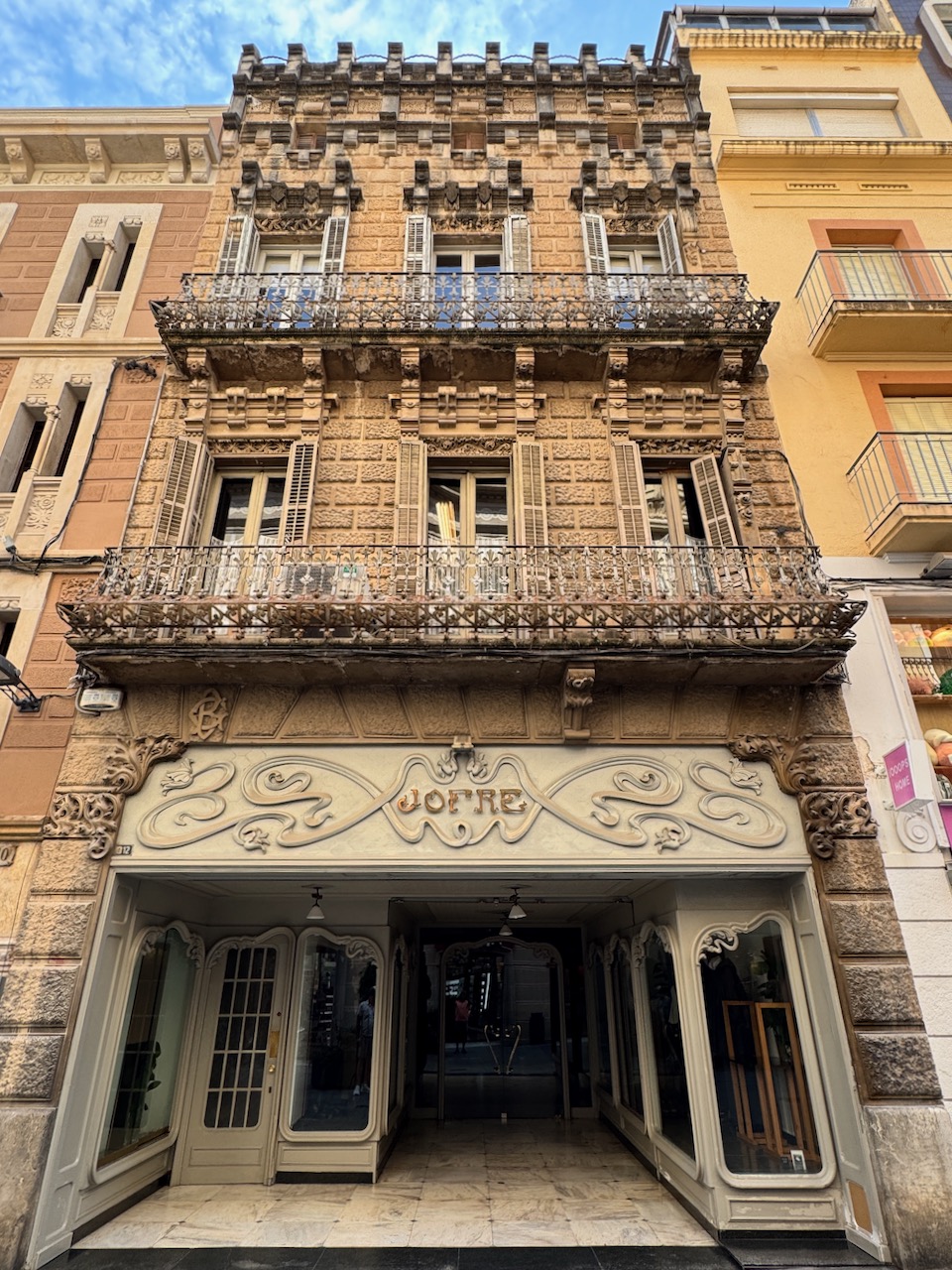 Casa Bartoli
Casa Bartoli 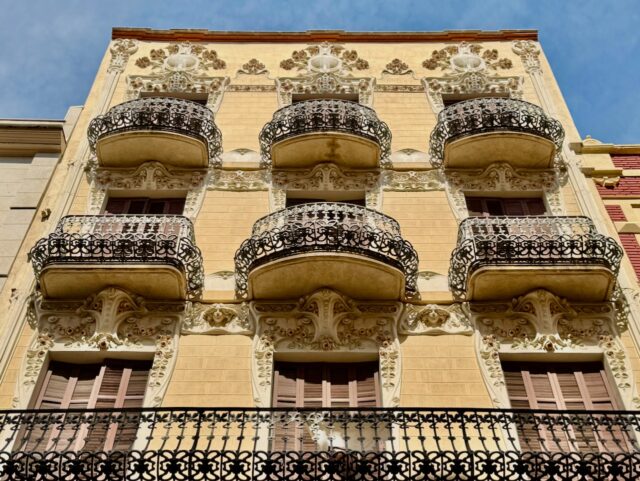 Casa Tomàs Jordi
Casa Tomàs Jordi
Caixa de Pensions: A Counter-reaction to Modernism
At the end of Carrer de Llovera, you’ll find a triangular square with the statue of Fortuny. Behind it stands the imposing Caixa de Pensions building. This interesting building was built in the 1930’s in the Noucentisme style, an architectural movement that originated in Catalonia in the early 20th century largely as a counter-reaction to Modernism. A great way to end a Modernist architecture walk, don’t you think?
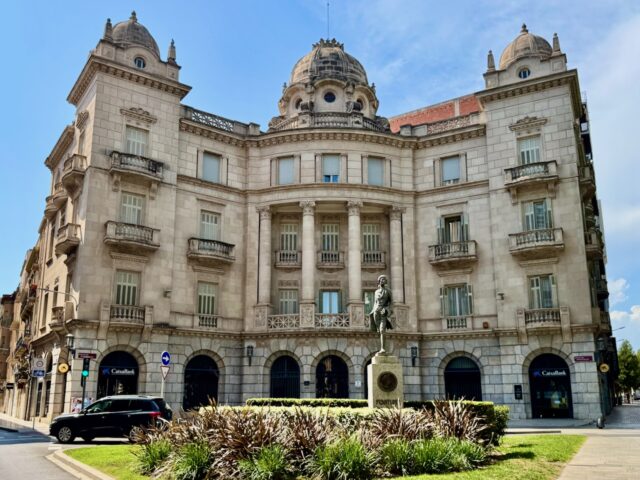 Caixa de Pensions
Caixa de Pensions
Sant Joan de Reus
The last stop on my Reus architecture walking route is the Church of Sant Joan Baptista. This beautiful 19th century church was built in the neo-Gothic style with a single nave and semi-hexagonal apse. Step inside to admire its stunning stained glass windows!
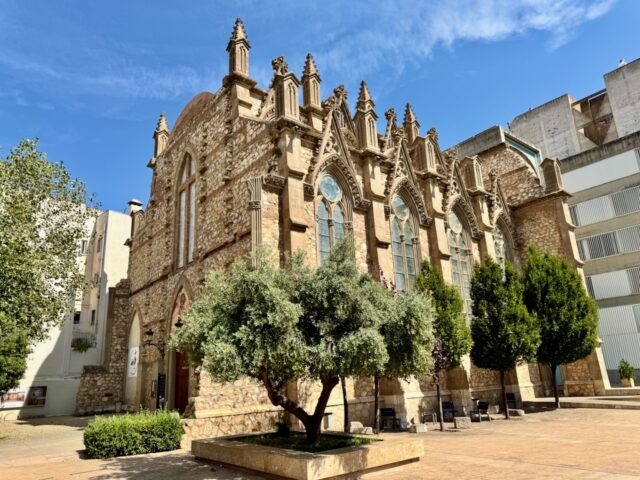 Sant Joan de Reus
Sant Joan de Reus
Pere Mata Institute
If you have time, there’s one more Modernist building in Reus that shouldn’t be missed. Located in the outskirts of the city, a 30-minute walk from the station, the Institut Pere Mata is a psychiatric hospital designed by Domènech i Montaner between 1897 and 1912. The complex features pavilions decorated with ceramic tiles, stained glass, and intricate ironwork. Particularly striking is the Pavilion of the Distinguished, which once hosted affluent patients and now welcomes visitors. This site is one of the best examples of Modernism’s commitment to both functionality and aesthetics.
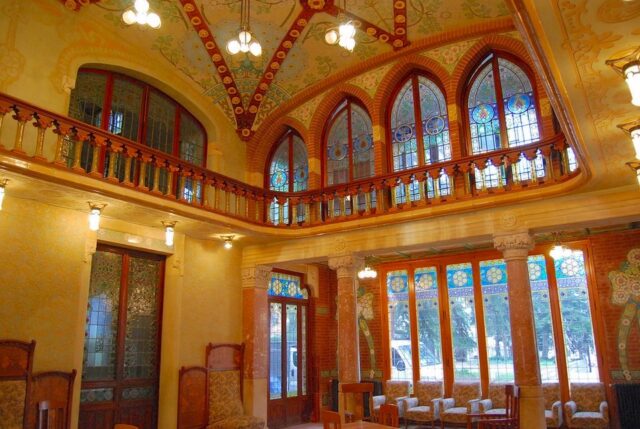 Pere Mata Institute (image by Tomas/Wikimedia Commons)
Pere Mata Institute (image by Tomas/Wikimedia Commons)
Reus is absolutely worth visiting. You won’t find crowds of tourists there. Instead, you’ll find beautiful streets filled with gorgeous Modernist gems and a lovely Mediterranean atmosphere. If you’re visiting from Barcelona, I recommend combining Reus with Tarragona and perhaps spending a night or two in either city.
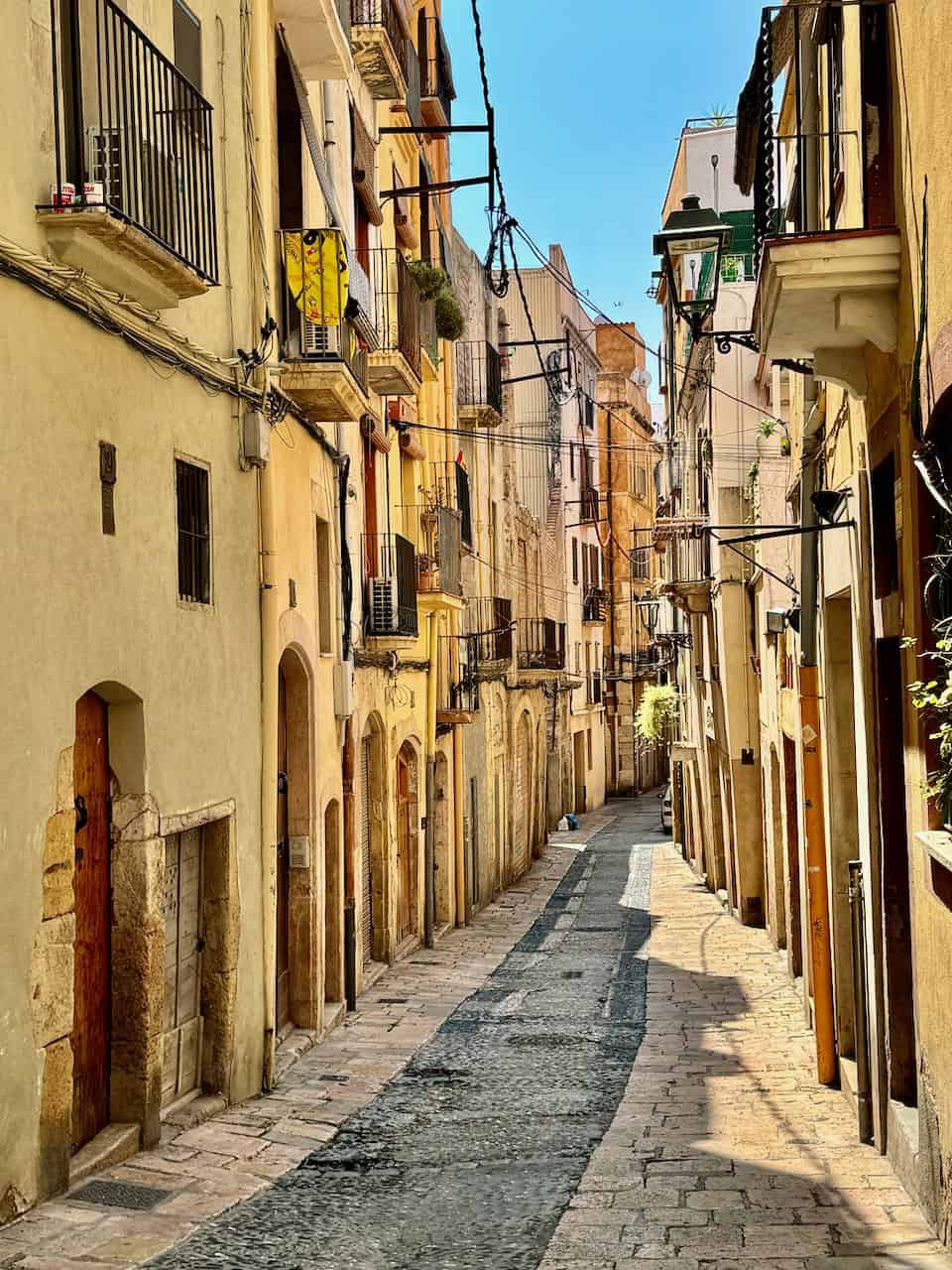 Tarragona’s old town is a patchwork of charming streets.
Tarragona’s old town is a patchwork of charming streets.
Read more about architecture in Spain
Please visit:
Our Sponsor
